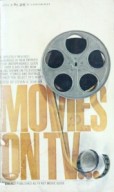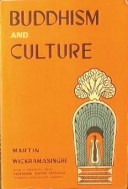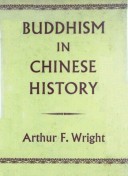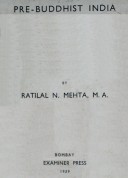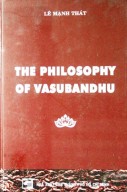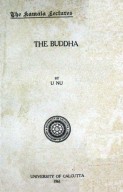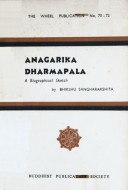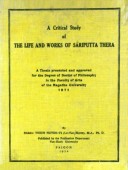Movies on TV
Formerly published as TV Key Movie Guide
Edited by Steven H. Scheuer
You’ll never miss the realty good ones with MOVIES ON TV. Here are all the latest releases and the old favorites. The fabulous films you have heard about—musicals, westerns, war stories, science fiction, comedies, and sensational foreign favorites. With this handy, up-to-date guide, you’ll know in advance which stars are appearing, what the story is about and whether each picture is really worth watching.
Steven Scheuer and his staff of New York and Hollywood reporters have personally screened, pre-viewed and rated each of the more than 6,900 films described in this book, to give you the most honest, accurate and entertaining recommendations possible.
Keep this copy of MOVIES ON TV near your television set and make sure to enjoy the very best in TV movie watching!
PREFACE
This is the fourth edition of Movies on TV. It includes hundreds of new reviews of feature films released for television since the publication, in 1966, of the most recent edition of this reference work which was then entitled TV Key Movie Guide. As always, we have one principal object in mind: to make the viewing of feature films on TV easier and more enjoyable by enabling film fans to be better informed and more selective.
In the past few years virtually every good film—and thou¬sands of poor ones—made during the 1950’s and early 60’s has now been released for showing on TV. About the only exceptions are a few major “roadshow” attractions like Around A the World in 80 Days and such box-office sensations as the I James Bond thrillers starring Sean Connery. Most of the broadcast time that local TV stations devote to screening feature films is now filled by movies of comparatively recent I vintage. A decade ago TV stations regularly telecast poor motion pictures of the 30’s and 40’s. This is no longer the case, especially if the films in question do not boast any big name stars. I have consequently included in this edition fewer reviews of the undistinguished pictures of the 30’s and 40’s. Those venerable old films, like many of today’s younger viewers, were conceived and produced during the years of the Great I Depression, the New Deal and World War II.
These events belong to history and so, in a real sense do the films of the 30’s and 40’s. They have had their hours of glory on TV and, with the exception of the greats and near-greats are gradually being returned for good to the film vaults by their licensees. However most of the enduring and worthwhile films of these two decades are described here because of their continuing popularity.
Both serious students and casual fans of the art of motion pictures are still indebted to television for one continuing blessing—TV continues to provide a previously undreamt of opportunity to examine at one’s leisure and with little expense, virtually the entire history of a major American art form. An art form, furthermore, that has had a profound impact on the habits and attitudes of audiences throughout the world.
With a little advance planning, movie fans can now sample the work of almost every noteworthy talent or personality since the movies first learned to talk. Social anthropologists concerned with changing American sex symbols can scrutinize Rudolph Valentino’s first silent films. They can dispassionately assess the lovemaking techniques of such celebrated past practitioners as Garbo, Gable, Harlow and Flynn, as well as such recent standard bearers as Monroe, Bardot, Burton, Taylor and Loren. They can study the directorial accomplishments of such early titans as Lubitsch, King Vidor and Renoir, the refinements of later but still contemporary masters like John Ford, Hitchcock, Kazan, Billy Wilder, and William Wyler, and the recent films of such remarkable younger directors as Fellini, Tony Richardson, Ingmar Bergman, Antonioni and Kubrick.
Careful planning, a carefree schedule, and the luck to live in a community with one or more knowledgeable and dedi¬cated TV program managers, will permit today’s movie buffs to trace the careers of their favorite performers. You can see many of the movie roles played by such current box office favorites as Paul Newman, Sidney Poitier, Julie Christie or Rod Steiger. You can also follow cinema careers of older stars who are still headliners. Katherine Hepburn, for example, can be seen with John Barrymore in the vintage 1932 Bill Of Divorcement, with Cary Grant in The Philadelphia Story, boating with Bogart in The African Queen, dallying in the canals of Venice in Summertime and finally in her triumphant performance in Long Day’s Journey Into Night, which post¬dates her film debut in Divorcement by well over a quarter of a century. Those viewers who prefer a continuing story line while gazing at their Hollywood idols, may treat themselves to the no doubt edifying spectacle of Doris Day in modem day versions of The Perils of Pauline. Most of these serialized feature-length thrillers—in blushing color, not the black and white of the old cliffhangers—reveal the freckled, thirtyish Doris maintaining a precarious hold on her chastity while being romanced, though never seduced, by such dapper worthies as Rock Hudson and the ageless Cary Grant. De¬pending on your tastes you can see many of Charlie Chaplin’s classics, Bette Davis in any of her numerous roles, or assorted creaky “whodunits” with such second feature stalwarts of the 40’s as Sheila Ryan, Kane Richmond, or Stephanie Bachelor.
In the mid-50’s the release to TV of some of the best films from the major studios coincided with a particularly rapid, and as yet unchecked, deterioration in TV network program¬ming. The numerous rewarding “live” dramas starting around 1949 developed an audience with an increasing appreciation of spirited, ử often flawed, drama, coupled with the comforts of home. But the very qualities of immediacy, honesty and literacy which distinguished much of the “live” drama in TV’s formative years were increasingly disregarded in favor of innocuous, banal and frequently inexcusably violent filmed TV series. Current network programming, with altogether too few exceptions, still deserves to be called, as one perceptive wag suggested years ago, a “case of the bland leading the bland. The drama-oriented viewer of the mid-50’s under¬standably turned to the good “old” films which were suddenly available in large numbers on the home screen. He was not disappointed. Millions of moviegoers were then ex¬posed to this vast body of Americana for the first time, and were given a unique insight into the feelings and fashions of the 30’s and 40’s. Today’s high school students and film buffs young or old, now have a similar opportunity with regard to the films of the 50*s, both foreign and domestic.
The enormous interest in feature films on TV shows no signs whatever of abating. One of the landmark dates in TV’s history is a Saturday night in the fall of 1961. In September of that year NBC debuted a brand new concept in network programming—they showed a recently made Hollywood movie in its entirety during prime evening time. It was just as simple as that! Born out of desperation and conceived as yet another try to win respectable ratings for the crucial Saturday night time slot, two blondes named Monroe and Grable showed NBC how to win high ratings. The movie that started a fundamental change in the pattern of TV programming was How to Marry a Millionaire. Since that time network broadcasts of feature films originally made for theatrical exhibition have usually shot down their opposition in a fight decided by the most cold-blooded sheriff of them all—A. c. Nielson and his quick-draw ratings.
There have been three important developments regarding the presentation of “movies” on television. One of the notable and inevitable developments is that a feature length film is now shown as a network presentation every single night of the week. Some of these feature presentations are in reality nothing more than two-hour TV shows that are first seen on TV. The general calibre of these offerings, to judge by NBC’s World Premiere series, is quite low, and the films in question are usually so mediocre that they are seldom released to the theaters in the u. s. after being shown on TV. The last significant change affecting “movies seen on TV” is that the time between their theatrical release and their later appearance on TV is constantly being shortened. Some features now show up on TV little more than a year after being seen in movie houses throughout the country.
One bit of advice. The film reviews in this book were all written by myself and members of TV Key’s staff and are based upon the original, uncut versions. Your enjoyment of certain films will sometimes depend upon what time you tune in. You’re much more likely to see a full length, non- censored version of a good film during the late evening hours than you are ư you watch during the day or early evening. It doesn’t matter much whether a station concludes a feature showing at 12:51 or 1:07 A.M., but it is imperative that shows end at a precise predetermined time during the rest of the broadcast day. Lengthy films have sometimes been trimmed to fit into one hour, and viewers in various cities have been subjected to such outrages as seeing movies from which some indolent film editor simply chopped off the first 15 or 18 minutes or took a similar chunk from the middle of the film. So if your local station perpetrates any of these indignities for reasons of time or some other factor, complain to them, not US.
And finally, in response to the question most often asked, here is a blanket reply which we’ll stand by for several years to come. Gone With the Wind is NOT planned for any TV showings in the foreseeable future.
 Facebook
Facebook
 Google
Google
 Google+
Google+
